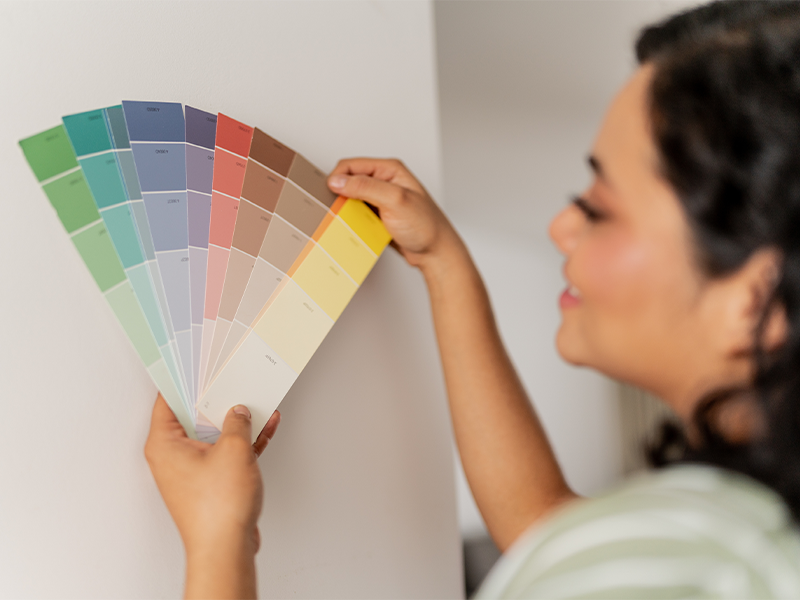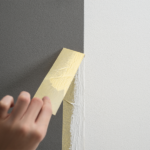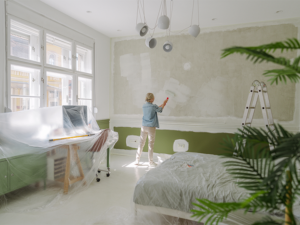
The colors surrounding us have a profound effect on how we feel and act, often influencing our emotions and decisions in ways we don’t consciously realize. From calming blues to energizing reds, the hues in a room can shape the atmosphere and impact behaviors, making color choice a major tool in interior design.
Understanding the psychology behind colors can help create spaces that encourage relaxation, productivity, or even creativity. This article will, therefore, explore color psychology, differentiate between warm, cool, and neutral colors, and provide practical tips for selecting the perfect shades for each room.
Understanding Color Psychology
Color psychology studies how colors affect emotions, thoughts, and actions. While cultural and personal experiences can influence how people react to colors, some effects are broadly understood.
Warm colors like red, orange, and yellow are energizing and passionate, making them suitable for spaces like dining rooms or creative areas where activity and interaction are encouraged. In contrast, cool tones like blue, green, and purple create calm and stability, making them ideal for bedrooms or workspaces where relaxation and focus are key.
Neutral shades, such as white, gray, and beige, act as simple and adaptable backgrounds, allowing other colors to stand out while promoting a sense of cleanliness and balance. By selecting colors thoughtfully, homeowners, designers, and businesses can shape environments that support specific moods, improve comfort, and boost productivity.
Warm Colors
Warm colors like red, orange, and yellow add energy and liveliness to a space. These colors are linked to feelings like passion, excitement, and happiness, making them ideal for creating vibrant and welcoming environments.
Red is bold and symbolizes strength and passion. It’s great for dining rooms or social spaces because it sparks conversation and can even boost appetite. However, too much red can feel overwhelming. Orange is cheerful and creative, perfect for living rooms or kids’ play areas. It creates a playful and uplifting vibe.
Yellow is bright and positive, making it a good choice for kitchens or bathrooms. While soft shades create a cozy feel, too much yellow might feel overwhelming, so it’s important to use it in moderation.
Cool Colors
Cool colors like blue, green, and purple are calming and soothing. They’re perfect for creating peaceful, focused, or relaxing spaces. When used thoughtfully, they enhance the mood and purpose of a room, whether for relaxation, focus, or creativity.
Blue is a calming color often linked to trust and serenity. Light blues work well in bedrooms or bathrooms to create a tranquil feel, while darker blues add elegance to home offices or formal spaces. To avoid a cold atmosphere, balance blue with warm accents.
Green symbolizes nature and renewal, bringing a fresh and harmonious vibe to any room. Soft greens are great for bedrooms and living rooms, while brighter greens add energy to kitchens or creative spaces.
Purple blends the calm of blue with the energy of red. Light shades like lavender are perfect for relaxing bedrooms, while darker purples like deep violet add luxury to dining rooms or sitting areas.
Neutral Colors
Neutral colors like white, beige, gray, and black are popular in interior design for their flexibility and timeless look. They can create calm spaces on their own or serve as a base to highlight brighter colors.
White represents simplicity and openness. It makes small rooms feel bigger and is great for minimalistic designs. To prevent a sterile look, add textures or warm accents. Beige adds warmth and comfort. It works well in living rooms and bedrooms, blending easily with various styles and colors.
Gray brings a modern, sophisticated touch. Light gray feels calm and is great for offices, while darker shades add depth to spaces like dining rooms. Black creates drama and elegance when used in small amounts. It can make other design elements stand out but should be balanced with lighter tones to avoid feeling overwhelming.
Practical Tips for Choosing Room Colors
When choosing colors for a room, start by thinking about its main purpose. For relaxation spaces like bedrooms or living rooms, calming colors like soft blues or greens are ideal as they promote peace and reduce stress. For more energetic spaces like home offices or gyms, bright colors such as yellow or orange work well to boost energy and focus.
Next, consider how much natural light the room gets. In well-lit spaces, darker shades can work because the light will prevent them from feeling too heavy. In rooms with less natural light, lighter colors will help brighten the space and create a more open feel.
Before choosing a color, test a few paint samples on the walls to see how they look at different times of the day and under various lighting. This ensures the color fits the room’s purpose and atmosphere.
It’s also important to balance warm and cool tones. Combining both can create a harmonious environment. For example, pairing warm beige with cool blue can offer a pleasing contrast without overpowering the space.
Accent colors can add personality to a room without overwhelming it. Use bold colors in small amounts, like on a feature wall or through decor items like cushions or artwork. While trends are tempting, it’s a good idea to choose timeless colors. Neutral tones form a classic base and can be easily updated with new accessories or decor to keep the room fresh.
Think about how the room’s colors will fit with existing furniture and decor. A cohesive color palette ties everything together for a polished look.
Lastly, colors can define areas in open-plan spaces. For instance, warm colors can distinguish a dining area from a living room, while cool colors can create a relaxing lounge zone. This helps define spaces without needing walls. By keeping these factors in mind, choosing room colors becomes easier and more enjoyable, ensuring the space looks good and supports its purpose.
Frequently Asked Questions
How does color psychology influence room mood
Color psychology plays a vital role in setting the mood of any room. By selecting the right hues, homeowners can create calming, energizing, or inviting spaces that match their tastes.
What are examples of warm colors for decorating?
Warm colors for decorating include red, orange, yellow, terracotta, golden yellow, and burnt orange, creating inviting and comfortable home spaces.
Which cool colors work best in bedrooms?
At Witte Custom Painting, we recommend cool colors like soft blues, gentle greens, and soothing lavenders for bedrooms. These hues create a tranquil and relaxing atmosphere, perfect for promoting restful sleep and a peaceful environment.
How Can Neutral Colors Enhance Home Interiors?
Neutral colors enhance home interiors by offering a calm, versatile backdrop. They reflect light, making spaces feel larger and brighter while allowing easy integration of different décor styles.
What tips help choose the right room colors?
Selecting the perfect room colors involves considering natural light, room purpose, existing furnishings, and personal preferences. At Witte Custom Painting, we recommend testing samples, choosing complementary hues, and ensuring consistency throughout your home for a harmonious and inviting atmosphere.
Your Space, Your Style
At Witte Custom Painting, we recognize that choosing the right colors is essential for creating the perfect home atmosphere. Our expertise in color psychology ensures each hue enhances your living spaces and reflects your style. By carefully selecting warm, cool, and neutral tones, we help you achieve comfort, relaxation, and elegance in every room. Contact us today to transform your home with thoughtful color choices that make a lasting impression.



